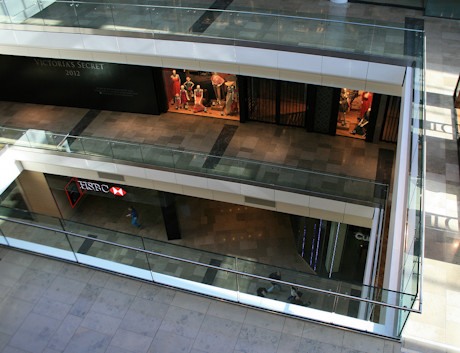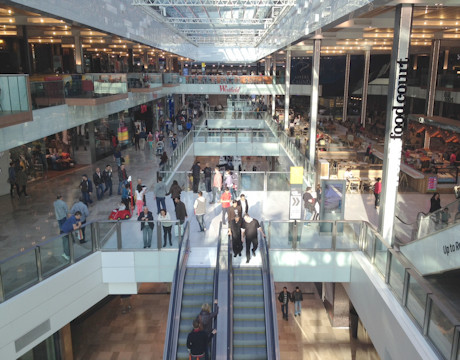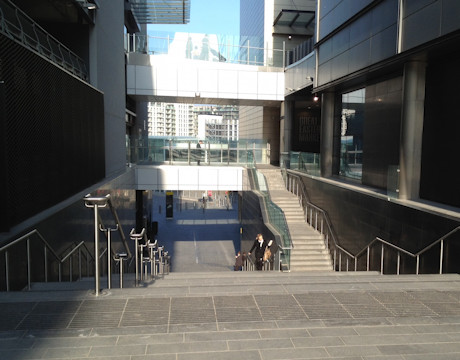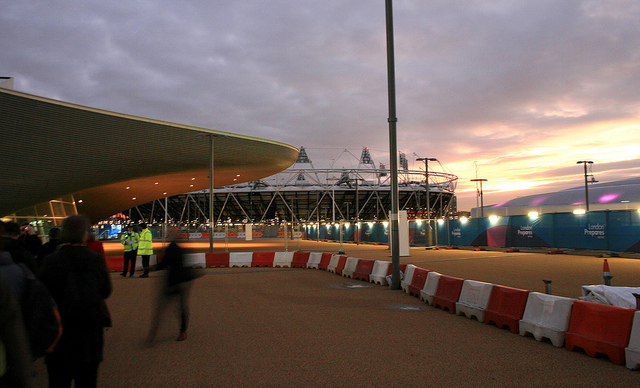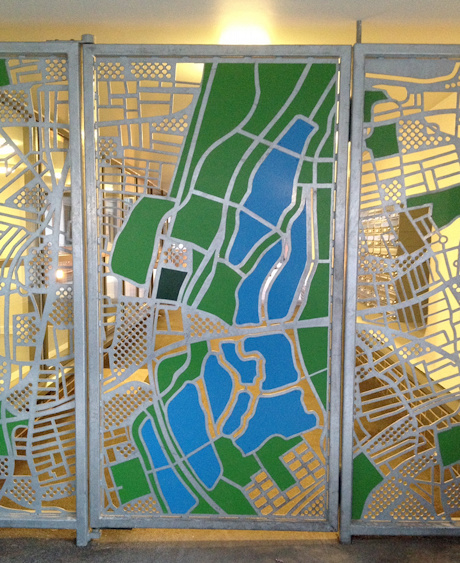Here are the colour ramps I am using for numeric measures in the recently launched CityDashboard (which by the way now has a new URL – http://citydashboard.org/):

The colours have been designed to be clearly distinguishable from the white text that is on top of them.
Here is the PHP code that I’m using to choose the appropriate colour for each measure, and which I also used to produce the above ramps – the reverse colour and bad value handling is only implemented where I currently needed, ideally these would be implemented for all the ramps:
$na_rgb = 128;
function getGreyRedHex($val, $min, $max, $reverse=false, $processing=false)
{
$val_0_255 = getNormalisedVal($val, $min, $max);
$r = 128 + 0.5*intval($val_0_255);
$g = 128 - 0.5*intval($val_0_255);
$b = 128 - 0.5*intval($val_0_255);
return getHex($r, $g, $b, $processing);
}
function getGreyBlueHex($val, $min, $max, $reverse=false, $processing=false)
{
$val_0_255 = getNormalisedVal($val, $min, $max);
$r = 128 - 0.5*intval($val_0_255);
$g = 128 - 0.5*intval($val_0_255);
$b = 128 + 0.5*intval($val_0_255);
return getHex($r, $g, $b, $processing);
}
function getColdWarmHex($val, $min, $max, $reverse=false, $processing=false)
{
$val_0_255 = getNormalisedVal($val, $min, $max);
$r = intval($val_0_255);
$g = 255 - 2*abs(127.5 - $r);
$b = 255 - $r;
if ($reverse)
{
$r_temp = $r;
$r = $b;
$b = $r_temp;
}
return getHex(0.8*$r, 0.8*$g, 0.8*$b, $processing);
}
function getGreenYellowRedHex($val, $min, $max, $reverse=false, $processing=false)
{
global $na_rgb;
if ($val === "n/a") { return getHex($na_rgb, $na_rgb, $na_rgb, $processing); }
if ($val === "?") { return getHex($na_rgb, $na_rgb, $na_rgb, $processing); }
$val_0_255 = getNormalisedVal($val, $min, $max);
$r = intval($val_0_255);
$g = 255 - intval($val_0_255);
if ($g > 128) { $g = 128; }
$b = 0;
return getHex($r, $g, $b, $processing);
}
function getRedGreyGreenHex($val, $min, $max, $reverse=false, $processing=false)
{
global $na_rgb;
if ($val === "n/a") { return getHex($na_rgb, $na_rgb, $na_rgb, $processing); }
$val_0_255 = getNormalisedVal($val, $min, $max);
$r = 255 - intval($val_0_255);
$g = intval($val_0_255);
if ($g > 128) { $g = 128; }
$b = 128 - abs(127.5 - $val_0_255);
return getHex($r, $g, $b, $processing);
}
function getNormalisedVal($val, $min, $max)
{
if ($val < $min) { $val = $min; }
if ($val > $max) { $val = $max; }
$range = $max - $min;
return ($val - $min)*(255/$range);
}
function getHex($r, $g, $b, $processing)
{
$hex = str_pad(dechex($r), 2, "0", STR_PAD_LEFT)
. str_pad(dechex($g), 2, "0", STR_PAD_LEFT)
. str_pad(dechex($b), 2, "0", STR_PAD_LEFT);
if ($processing) { return "FF" . $hex; }
else { return "#" . $hex; }
}
I’ll be presenting CityDashboard at the forthcoming Wherecamp EU unconference which is taking place in Amsterdam this weekend.

 CityDashboard features specially curated Twitter lists. For each city, there is a general news list, featuring tweets from local newspapers, local correspondents for the BBC and other TV and radio channels, tourist organisations and the official accounts for the relevant local authorities. There is also a universities list, with the official Twitter accounts for the main universities in each city, as well as their student unions. It is hoped that this latter list with detail the latest university research outputs, coming out of that city. The account that manages the lists is
CityDashboard features specially curated Twitter lists. For each city, there is a general news list, featuring tweets from local newspapers, local correspondents for the BBC and other TV and radio channels, tourist organisations and the official accounts for the relevant local authorities. There is also a universities list, with the official Twitter accounts for the main universities in each city, as well as their student unions. It is hoped that this latter list with detail the latest university research outputs, coming out of that city. The account that manages the lists is 
